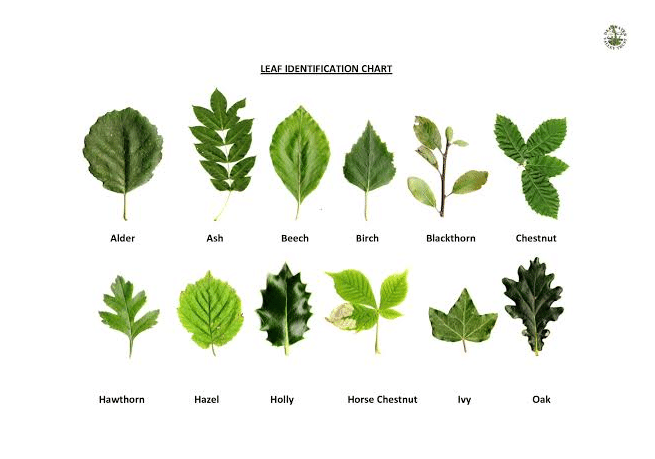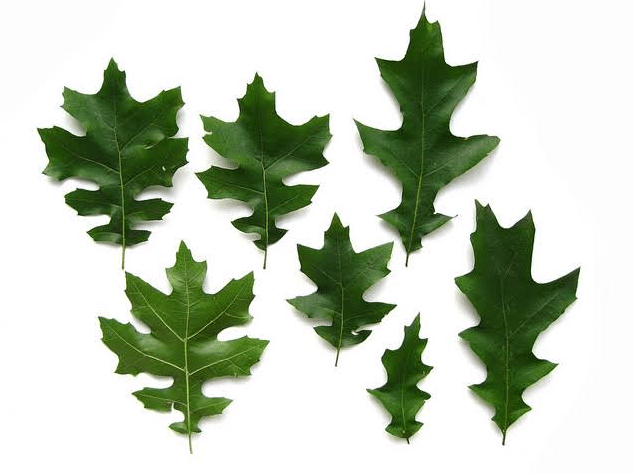Tree Leaf Identification By Leaf And Size
Tree Leaf Identification: Begin with the basics – bark, leaves, branch structure, flowers, and fruit. Leaves are the most reliable way to identify a tree, since they’re found on or beneath the tree all year round, as opposed to the flowers and fruit that often only appear for a few weeks each year.
Whether you’re on a walk in the woods or a park or merely sitting in your own backyard, you may be curious about the trees around you. Deciduous trees—including oaks, maples, and elms—shed their colorful leaves in the fall and sprout bright new green leaves in the spring.

You should also study the tree for thorns or spines, ridges, buds, and even the odor! Many trees and shrubs are fragrant, or their twigs have a distinct flavor. Aromatic sumac leaves, for instance, have a strong, astringent fragrance when crushed.
As a general rule, trees are considered woody plants 13 feet tall or taller and typically have only one trunk. Shrubs are woody plants less than 13 feet tall that usually have multiple stems, and those stems are generally less than three inches in diameter at 4.5 feet from the ground. A vine is a plant whose stems require support – it either climbs up a tree or other structure or sprawls over the ground.
Tree Identification By Leaf
The starting point for most people when identifying trees species is the leaves. There are three basic leaf types: needles, scales, and broadleaf. Most evergreens have needles or scales, while most broadleaf trees are deciduous, meaning they drop their leaves when dormant. However, there are exceptions. Larch has green needles that turn color in fall and drop off the tree. Live oak is an evergreen tree with broad, elliptical leaves.
Identify Trees By Leaf Shape
The shape of a leaf can also give clues when identifying broadleaf tree species. Common leaf identification shapes include ovate (egg-shaped), lanceolate (long and narrow), deltoid (triangular), orbicular (round) and cordate (heart-shaped). There is also the palm-shaped maple leaf and the lobed oak leaf, two of our most recognizable leaf shapes.
Oak Tree Leaf Identification
The oak tree is classified under the genus Quercus, a Latin word meaning ‘oak tree’. It belongs to the beech family (Fagaceae). Other than evergreen and deciduous oak trees, the species also includes smaller plants or oak shrubs. Hybrids, intermediates of two oak tree species, generally take the latter form. The oak tree has many hybrids which can make identification a tough job. The deciduous species of the oak tree are seen in the colder latitudes, while those with evergreen leaves are seen toward the south.
Ovate with a triangular or narrow wedge shape base and with a rounded point at the tip. The edges are not deeply cut but with broad large teeth, either on the entire leaf or just the top half. There can be many variations. The upper leaf is a dark shiny green and the underside much lighter with dense fine hair. Fall color is yellow to rusty brown – not considered striking.

Oblong to ovate in shape, with a base that is a narrow wedge shape to triangular with the point forming the short stalk. There will be 7 to 10 (5 to 9) ascending lobes looking like fingers, and a rounded apex at the top end of the leaf. The lateral lobes indent to the mid-vein by 1/3 to 7/8ths of the distance and these lobes to have a somewhat rounded tip. The upper surface is a bright gray-green and underside is more whitish with erect hairs that disappear as the leaf matures. The secondary leaf veins are arched.
Maple Tree Leaf Identification
The red maple is usually a medium-sized tree with a moderate growth rate. The bark is smooth and light gray on young- and intermediate-aged stems, while mature bark is dark gray and rough. Crushed twigs do not emit a rank odor as does the silver maple. Twigs are reddish and have rounded, oblong, vegetative buds. Floral buds are globose and conspicuous since they are borne in clusters. Lower branches tend to sweep upward.
- Leaves: The leaves of the Red Maple are very roughly toothed with 3-5 shallow lobes. Most of the Red Maple leaves are a light or a pale green to a whitish. During Autumn, leaves turn a bright red or bright orange.
Twigs: Most Red Maple twigs appear to be slender and glossy. At first, the twigs are green but later in the year, they turn red. - Fruit: The dioecious, red flowers are borne in dense clusters and appear in March or April before the leaves; the buds turn a deep red sometimes before they open. Male trees can be planted if you do not want fruit.
Amur Maple
The Amur maple is one of the smaller trees in the Acer genus, growing either as a spreading multi-stem shrub or a small tree with a dense, rounded crown.
Big Leaf Maple
As the name suggests, the leaves are quite large on this tree. It has the biggest leaves of any maple; the classic five-lobed, palm-shape leaves can be over 12 inches wide.
Hedge Maple
The hedge maple is a great choice for the urban garden, as it does well in many difficult environments: drought; acidic, alkaline, or salty soils; shady locations; and climates where there is ozone deficiency.
How Do I Identify A Tree Type?
To identify a tree, start by looking at the size, shape, and color of its leaves. If the leaves have 5 rounded lobes in them, then you’re probably looking at a sugar maple. Additionally, examine the tree’s bark to see whether it’s smooth, scaly, or ridged.
How Do You Identify Different Leaves?
- Determine the leaf type.
- Study the leaf arrangement.
- Identify the leaf shape.
- Analyze the leaf’s blade edges.
- Look at the leaf’s vein patterning.
- Check the leaf’s petiole, the stalk that connects the leaf to the tree.
- Record whether the leaf has a stipule.
Is There An App To Identify Trees?
Leafsnap is a series of electronic field guides being developed by researchers from Columbia University, the University of Maryland, and the Smithsonian Institution. The free mobile apps use visual recognition software to help identify tree species from photographs of their leaves.
What Tree Has Big Leaves?
The specific palm trees sporting the world’s biggest leaves belong to the Raphia genus, with the crown going to Raphia regalis, which is native to some African countries.



